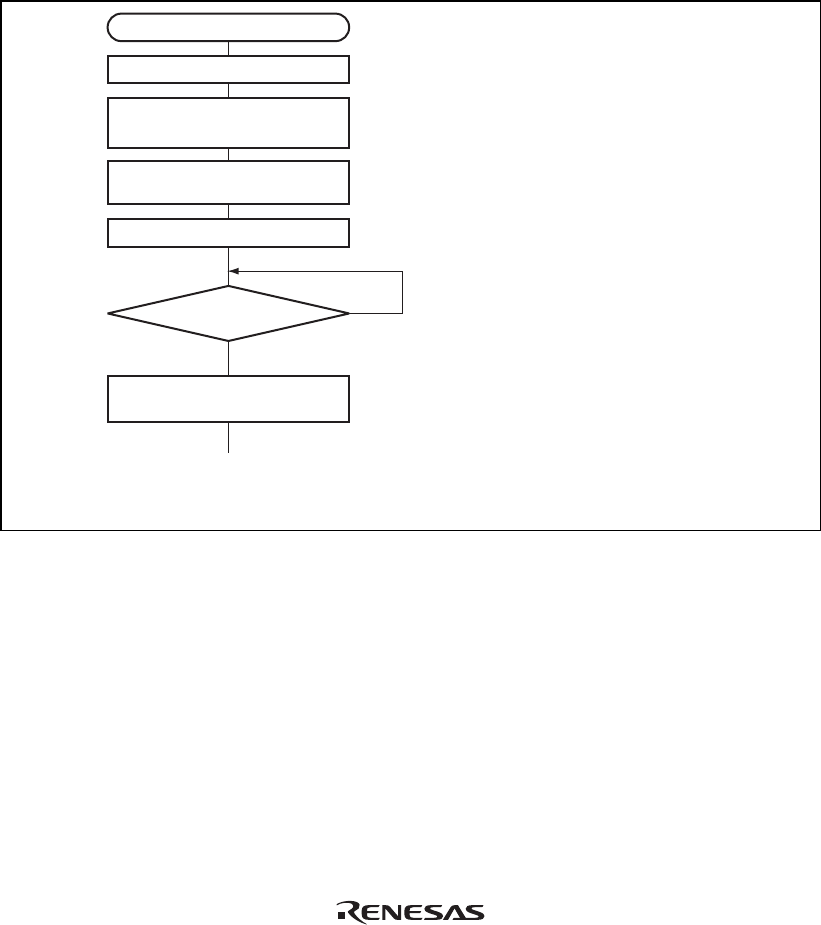
Rev. 1.00, 05/04, page 265 of 544
12.6.2 SCI Initialization (Clocked Synchronous Mode)
Before transmitting and receiving data, you should first clear the TE and RE bits in SCR to 0, then
initialize the SCI as described in a sample flowchart in figure 12.15. When the operating mode,
transfer format, etc., is changed, the TE and RE bits must be cleared to 0 before making the
change using the following procedure. When the TE bit is cleared to 0, the TDRE flag in SSR is
set to 1. However, clearing the RE bit to 0 does not initialize the RDRF, PER, FER, and ORER
flags in SSR, or RDR.
Wait
<Transfer start>
Start initialization
Set data transfer/receive format in
SMR and SCMR
No
Yes
Set value in BRR
Clear TE and RE bits in SCR to 0
[2]
[3]
Set TE and RE bits in SCR to 1, and
set RIE, TIE, TEIE, and MPIE bits
[4]
1-bit interval elapsed?
Set CKE1 and CKE0 bits in SCR
(TE and RE bits are 0)
[1]
[1] Set the clock selection in SCR. Be sure
to clear bits RIE, TIE, TEIE, and MPIE,
TE and RE to 0.
[2] Set the data transfer/receive format in
SMR and SCMR.
[3] Write a value corresponding to the bit
rate to BRR. This step is not necessary
if an external clock is used.
[4] Wait at least one bit interval, then set the
TE bit or RE bit in SCR to 1.
Also set the RIE, TIE TEIE, and MPIE
bits.
Setting the TE and RE bits enables the
TxD and RxD pins to be used.
Note: * In simultaneous transmit and receive operations, the TE and RE bits should both
be cleared
Figure 12.15 Sample SCI Initialization Flowchart


















